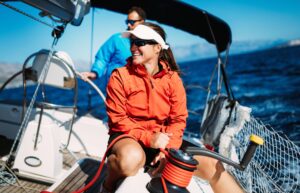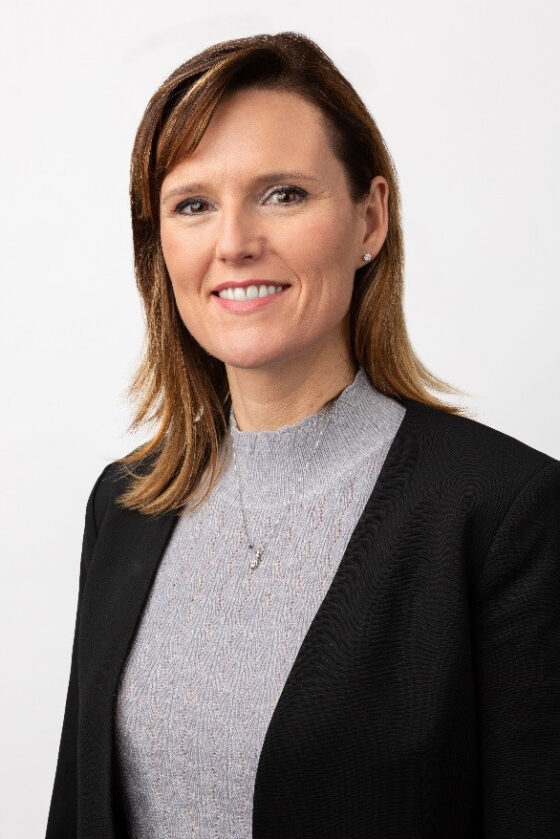
Rental models open doors to younger, more diverse communities

Edit: The percentages of those taking part in ‘any boating’, by ethnicity, have been updated on receipt of data clarification from British Marine.
Ask anyone outwith the marine industry to describe a typical boat owner and the answer has traditionally been male, white, and from an older demographic . . . or, more colloquially, male, pale and stale.
But within the industry especially over lockdown there were anecdotal reports of a surge in a younger owners coming to the fore, taking care of the stale. Couple this with companies using technology and rental models to disrupt traditional ownership models, and there is, arguably, change across all three categories.
Freedom Boat Club, active in the UK since 2021, has been busy honing its model to make sure it works for women. The club has two UK locations, with two more in the pipeline and offers – for an inclusive monthly fee – unlimited rental of RIBs / motorboats and all the training needed to make boating easily accessible without a lump sum outlay, or crucially, any previous experience.
And because of this, Brenna Preisser – business acceleration and chief strategy officer of owner Brunswick Group (pictured below) – says she has noted the increased number of women taking the lead.

“We have 35% women as primary Freedom Boat Club members using the boats,” she says reflecting on the US figures (where the club started in 2008) with a fleet of motorboats. Figures which she expects to see replicated in the UK.
“We’ve seen that typically women are less experienced. So one of the reasons that Freedom is appealing to women is the unlimited training, especially as many are new to boating, or at least to being new as the captain. We are making boating simple and accessible. And women are responding to that.”
Preisser cites the model’s core principles – no hassle, exceptional service delivered by dock staff and being part of a passionate boating community – as the keys to attracting women.
But getting women onto the water isn’t limited to motorboats.
Pivotal point for women into sailing
“We’ve been working on encouraging women and girls onto the water for many years,” says Susie Moore, the Royal Yachting Association’s regional development officer.
“We’re at a pivotal point at the moment,” she says. “At the elite end of the sport, such as SailGP, the America’s Cup and the Olympics, big changes are being made to include more female sailors. It’s bound to inspire more women and girls to get out onto the water.”
Moore says the change she’s currently seeing is the result of many years of focus in that area from the RYA and further afield. Membership of the RYA currently stands at 84k male and 21k female.
A recent survey into 2021 watersports participation* (which it says is probably somewhat skewed by covid and the pandemic’s many knock-on effects in the UK and abroad) shows a move towards ‘casual participation’ across the sports – including small sail boats, yacht cruising, yacht racing and more. This means participants have been engaged in the activity just once in the last 12 months. Power boating, and motor-boat cruising are moving the same way, the survey suggests. And, it’s the men who are getting on the water the most, with 68% sailing, and 64% enjoying powered activities. That said, the overall spread of participants shows 49% of those taking part in the catch-all ‘any watersports activity’ are female.
Preisser says she’s finding the Freedom trend – of growing female participation – to be personally satisfying. She’s been in the industry for coming up to eighteen years.
“There are so many parallels to women having the confidence to take the helm in boating as there is in life,” she says. “We’re really the customer the marine industry needs to target.
“At Brunswick we have women on the team thinking about product design and service experience. The evidence is everywhere that diversity leads to better outcomes; it’s the basis for innovation and a factor in how we are growing the business.”
Encouraging diversity in club membership
Aside from the gender mix, the RYA is aiming to encourage access to all.
“We’re lowering barriers to clubs by encouraging actions such as offering monthly direct debits payment options on membership fees to lower upfront cost, and helping people to take the decision to access sport long term,” Moore explains.
“People’s expectation is that they’ll have to buy boats and get all the equipment etc. And that there’s a big initial outlay. Not everyone can afford that.
“But many clubs have fleets of club boats which are free to members to use. So we’re looking to encourage the use of them and bring the costs right down.
“Alongside this, we’re encouraging clubs to look at their local communities and committees with the aim of reflecting that diversity in gender, age and other protected characteristics. We need well-rounded leadership to encourage innovation and the creation of offerings at grass roots participation level that appeal and create routes to progress. People want to go to places where they see people like them.
“We have toolkits to help club’s management review themselves and what their membership looks like. These kits help breakdown peoples’ unconscious bias. It takes a long time to create change in the world.”
The participation survey indicates the people taking part in ‘any boating’ are predominantly white, at 86%, while ‘mixed’ is 4%, Asian 7% and Black 2%. (These numbers have been updated (5July2022) after receiving data clarification from British Marine).
Helping newbies find their sea legs
Borrow a Boat is sweeping aside the barrier of initial outlays too. It’s described by Matt Ovenden CEO (pictured below) as a ‘no strings attached, pay as you go model.’ He believes it’s the “ultimate model for chopping and changing between boats.”
He doesn’t have any evidence (anecdotal or not) to support the gender change experienced by Freedom, but he is seeing large numbers make their first foray into boating.

“We’re seeing some big, younger, groups taking trips – they’re new to boating,” he says. These people aren’t being trained before they head out, but they are hiring skippered yachts which Borrow a Boat has worldwide.
When looking at age groups from the watersports survey, participation is encouraging. In ‘any watersports activity’, 33% are 16-34, 33% are 35-54 and 34% are 55 plus.
A recent report by Digital Journal predicts the yacht charter market will witness ‘revolutionary growth’ by 2027 as demand for cabin charters has been growing for sailing vacations among the people who don’t have skills for bareboat charter, or want to board a crewed luxury yacht.
According to Preissier, 30% of Freedom Boat Club members in the US are completely new to boating. Although data aren’t yet available for the UK, anecdotal evidence suggests that this trend is being repeated in the UK with new boaters.
Similarly, Premier Agapi Boat Club is seeing an increase in ‘new to boating’ customers, with an influx of those in their forties. Like Freedom, Premier Agapi will train those needing support. Andy Mills, business development director for Premier Marinas which runs Premier Agapi Boat Club in the UK, says it’s about a 30 per cent new boaters, and an increasing number of women joining the club. He believes that, in part, Premier Agapi’s numbers have seen an increase driven by boat supply chain issues which have seen delays on boats in build.
The boater’s lifecycle
Ovenden says he is developing a unique pathway for new boaters via Borrow A Boat. He’s taking them through the journey from novice to committed boater (and most of his customers are under sixty).
“An access point to the boating lifestyle is with static charters,” he says. “It’s the easiest starting point. Then a skippered charter is the next step to dipping a toe in the water.
“After that comes a bare boat charter and then we’re seeing people who have chartered a few times buying boats to offer on Borrow a Boat and offset their initial costs – that’s the end of the customer life cycle with us. That said, more and more customers are asking for our help with buying a boat so that’s something we’re looking at for the future.”
It could be argued that Borrow a Boat is nothing fundamentally new, after all boat charters have been around for decades, but as Ovenden points out, it’s the technology behind it, the fact that it’s peer-to-peer and the way charters are offered to customers that makes the difference.
“We acquired Barqo,” he says, “to use the tech for automating Air BNB style. This means we can also grow our day boat bookings, both in the UK and further afield.”
Borrow a Boat says it’s seen a definite rise in skippered charters pre and post pandemic. Ovenden believes people are spending more on holidays, and being more adventurous to boot, with a definite cross-over from luxury villa to boat rentals. But he doesn’t expect this to have any detrimental impact on new boat sales.
Underpinning the marine trade
Preisser also says the initial belief that the club model would cannibalise ownership has proven not to be true.
“Ninety per cent of our 50,000 members have said they never intended to buy boat when they joined the club,” she says of her US-based customers, “however once they join their interest in ownership increases.” Thus, the company is helping to underpin the marine trade, as well as continuing to offer access to those who have been boaters but are ready for a different experience. The ones who don’t want to deal with the maintenance or service anymore.
“It’s like skiing” says Ovenden. “There is a big group of people who ski every year, and others who sail. Sailors keep on sailing and we’re enabling that with a change of boats and locations.”
“We see a lot of parallels in the markets in Europe. The boat club model is really lifting the entire industry, marina operations, storage and boat manufacturers (whose boats we utilise),” says Pressier.
Ovenden agrees.
“Our model is popular with dealers and manufacturers,” he says. “Offsetting a boat’s financial costs with the rental model helps sales at boat shows.
“And, ultimately, having more people on the water feeds boating – whether that’s people in the marina, spending at restaurants, or buying kit at chandleries, or more.”
- *The watersports participation survey was commissioned by British Marine, the Maritime and Coastguard Agency, RNLI, British Canoeing, Cefas and the Canal and River Trust.
- Main image courtesy of Borrow a Boat
